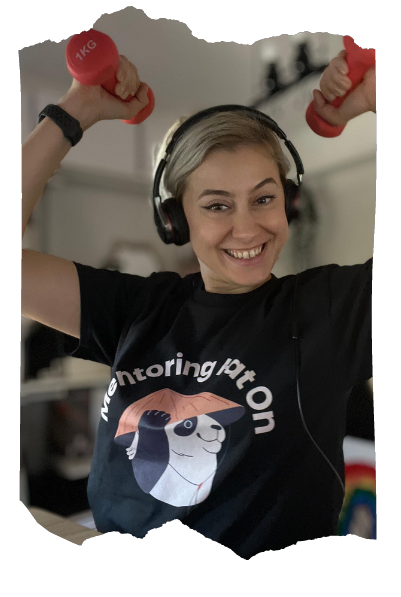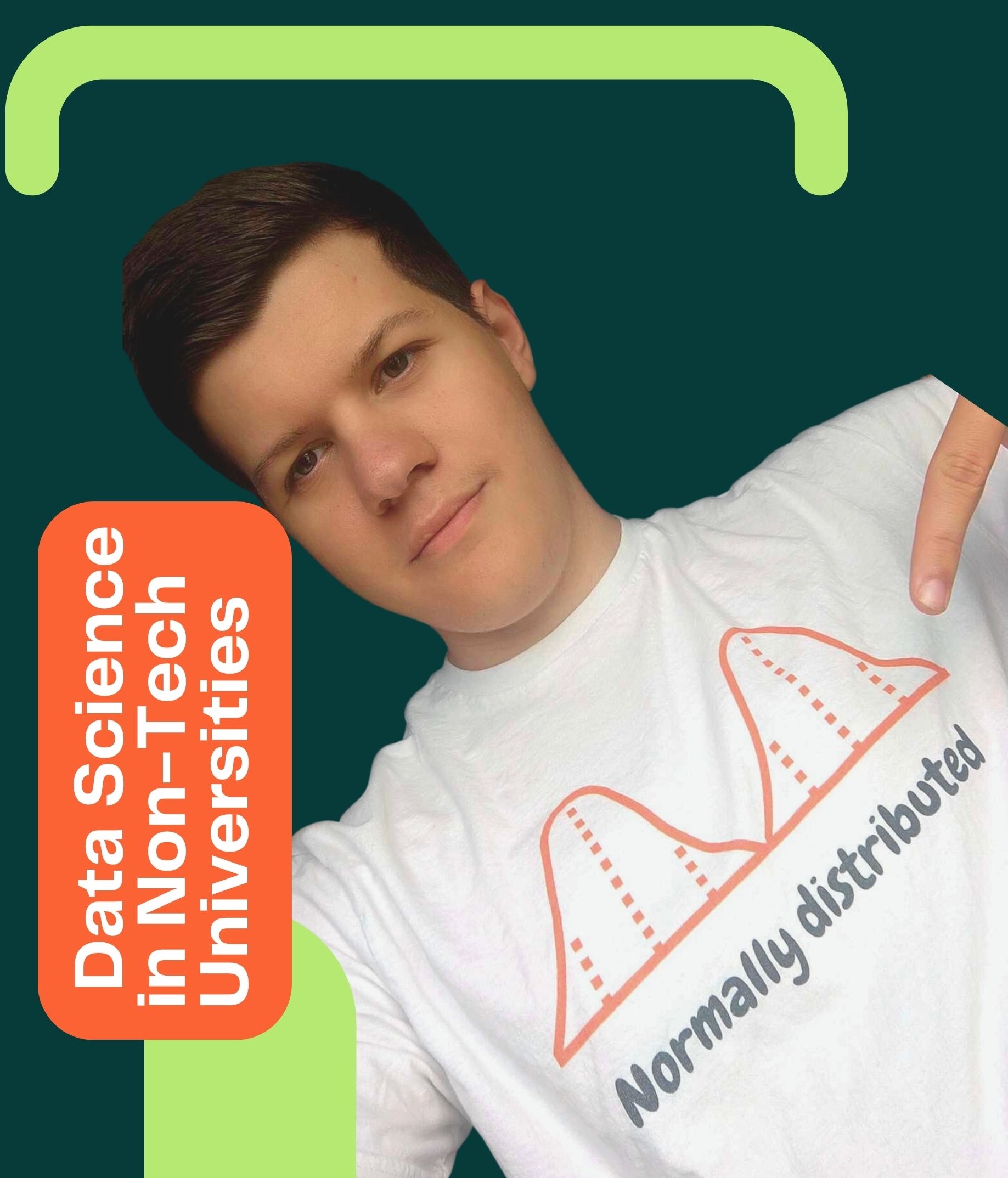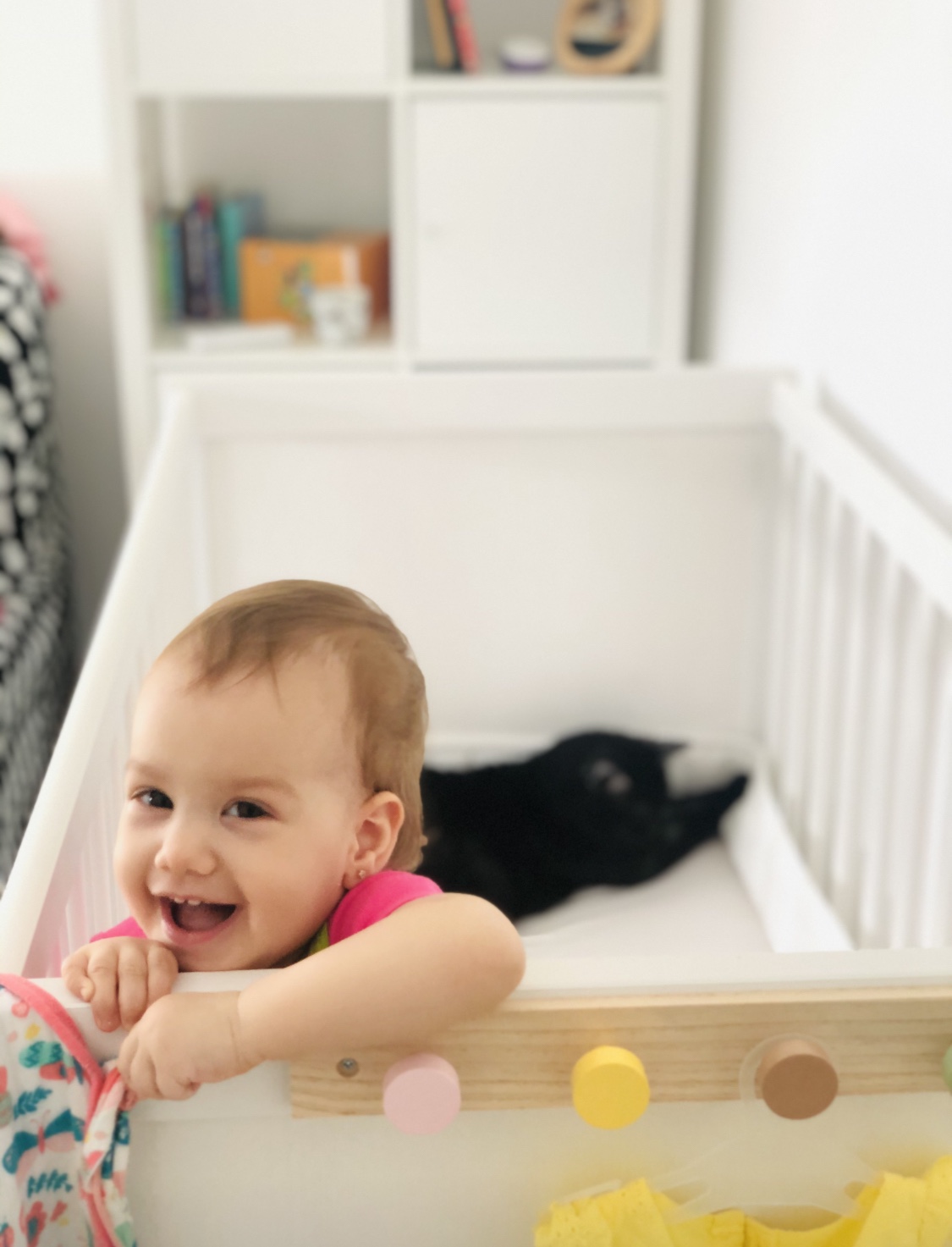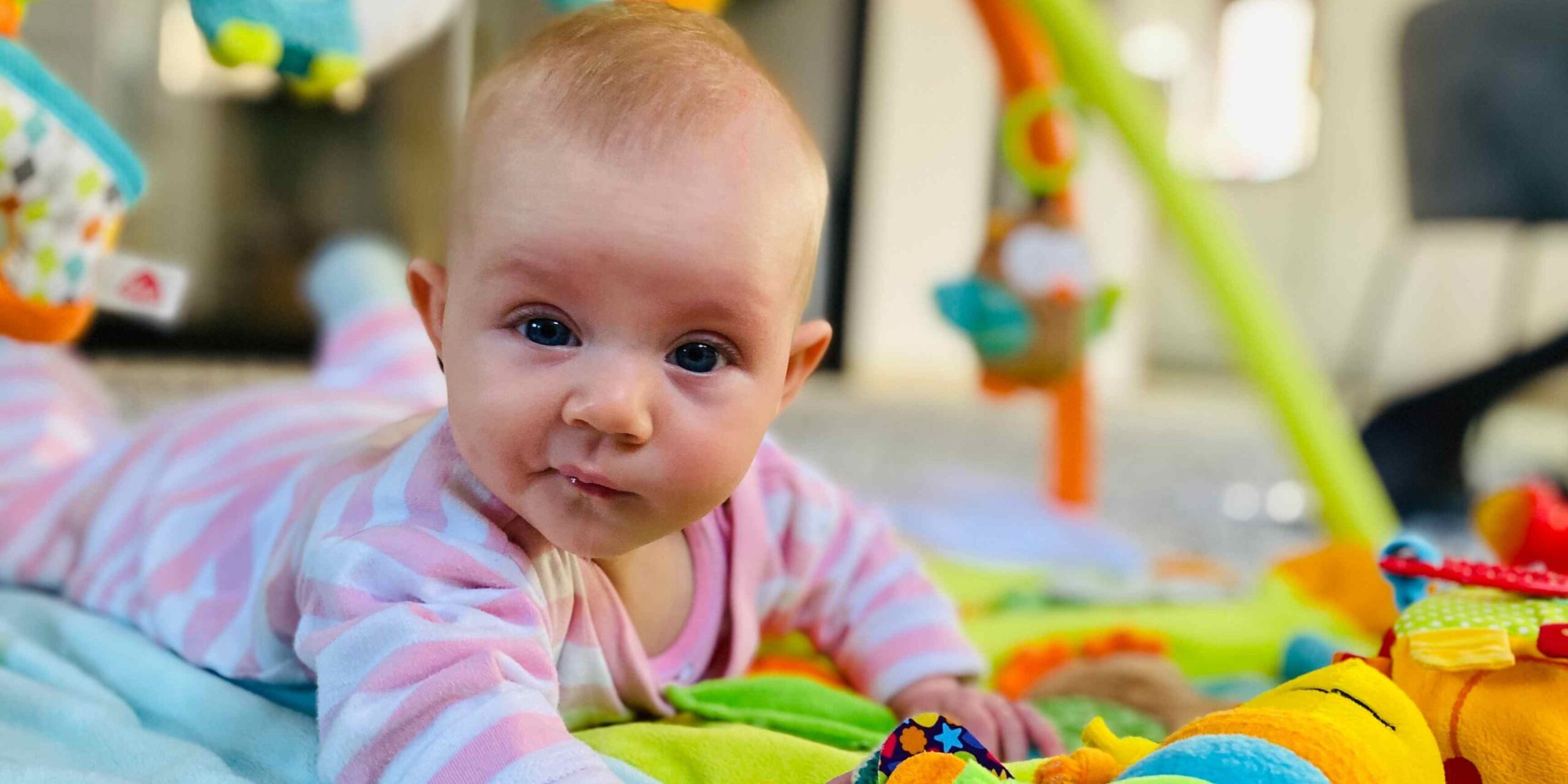Data science mentoring is my passion. I love helping data professionals step out of their comfort zones and achieve career growth. Recently, I had the opportunity to host a Gathers meetup called “Data Science Mentorship: A Win-Win Meetup.” At the meetup, I shared my thoughts on the benefits of data science mentoring and answered questions from the audience. This blog post is a summary of the questions and answers from the meetup. I hope this information is helpful to you, whether you are a mentor or a mentee. Benefits of data science mentoring Mentors: Mentoring can help you to develop your leadership skills, give back to the community, and learn new things from your mentees. Mentees: Mentoring can help you to learn new skills, advance your career, and build relationships with experienced professionals. Tips for mentors: Be supportive and encouraging. Your mentee needs to know that you believe in them and that you are there to help them succeed. Provide guidance and feedback. Help your mentee to set goals, develop a plan, and identify resources. Be a role model. Share your experiences and insights with your mentee. Tips for mentees: Be proactive. Don’t be afraid to ask for help and advice. Be open to feedback. Be willing to learn from your mistakes and grow. Be respectful of your mentor’s time and expertise. Ready to jump right in and uncover answers to some of the burning questions in the world of data science mentorship? 1. What is Data Science? Data science is a versatile field that equips data professionals with the tools to tackle complex problems and make informed decisions by applying mathematical and statistical concepts in a systematic and reproducible manner. Another way of explaining this is how I explain it to my kids: Data science is like playing a special game of hide and seek with your teddy bear. Imagine you really, really love your teddy bear, but you can’t remember where you left it in your room. You want to find it so you can hug it and feel happy again. So, you ask someone to help you, like a magic friend. This magic friend uses their superpowers to figure out where your teddy bear might be hiding. They look around your room, and when they get closer to the teddy bear, they say, ‘You’re getting warmer!’ But if they go in the wrong direction, they say, ‘You’re getting colder!’ Data scientists are like those magic friends. They help grown-ups with important stuff, like making sure cars don’t break down unexpectedly, deciding who can borrow money from a bank, and figuring out who might stop using a favorite game. They use their special skills to solve big problems and make the world a better place, just like how you want to find your teddy bear to make yourself happy again. For a more formal and concise definition of Data Science that you can use during an interview, consider the following: Data Science is the systematic application of scientific methods, algorithms, and data processing systems to extract knowledge and insights from diverse forms of data, encompassing both structured and unstructured sources. Find here a short article and a mini quiz. 2 .Where to start? Where to start in your Data Science journey depends on your current background. If you have experience in data-related fields like data analysis, software development, or software engineering, you already have a solid foundation. However, for beginners, the first steps often involve gaining a grasp of fundamental concepts in statistics and algebra. Here are some resources to help you get started: MIT OpenCourseWare: Statistics for Applications MIT OpenCourseWare: A 2020 Vision of Linear Algebra Data Science Roadmap 3. Which field should I master in? Data scientists who are versatile and adaptable are the most successful. This means being able to quickly understand any business and learn new technologies. Here are some tips for becoming a versatile data scientist: Learn how to learn. Data science is a constantly evolving field, so it is important to be able to learn new things quickly. This includes learning new programming languages, new machine learning algorithms, and new data science tools and technologies. Start with Python. Python is a popular programming language for data science because it is easy to learn and has a wide range of libraries and tools available. However, be open to learning other programming languages as well, such as Java, R, and Scala. Learn programming languages for general purposes, not just for data science. This will make you more versatile and adaptable. For example, learning Java will make it easier for you to work with big data technologies, and learning R will make it easier for you to work with statistical analysis tools. Learn clean coding practices. Clean coding is important for all software development, but it is especially important for data science because data science code is often complex and needs to be easily understood and maintained by others. This is a good article to read on Clean Coding. Learn modularity and design patterns. Modularity and design patterns are important for writing maintainable and reusable code. Stay up-to-date with the latest trends and technologies. The field of data science is constantly evolving, so it is important to stay up-to-date with the latest trends and technologies. Read industry publications and blogs, attend conferences and workshops, and take online courses. Initially discover the business you’re trying to help with ML / AI. Take the time to understand the business and the problem you are trying to solve. This will help you to develop effective machine learning solutions. Spend time in the business understanding phase and interview your stakeholder to unlock insights about the problem you need to solve. This will help you to develop a better understanding of the business and the needs of the stakeholders. By following these tips, you can become a versatile and adaptable
Category: Cristina
In today’s data-driven world, Data Science has emerged as a game-changer, transforming industries and revolutionizing the way we analyze information. While many assume a strong foundation in technology-related fields is necessary, the truth is that an interest in Data Science can be nurtured and cultivated in unexpected places, such as non-tech universities. This blog post explores how mentoring can empower students to excel in Data Science, even in an environment that traditionally does not focus on technology. The Power of Mentoring Mentoring serves as a catalyst for transforming theoretical knowledge into practical skills. By connecting students with experienced professionals in statistics and data science, mentoring offers a personalized learning experience tailored to individual needs. Mentors provide valuable insights, share real-world challenges, and offer guidance on acquiring relevant skills and knowledge, keeping students updated with the latest trends and advancements in data science. As a passionate mentor in the field of data science, I am dedicated to empowering students and professionals alike to excel in this transformative field, even in non-tech universities. I believe that with the right guidance and support, anyone can develop a passion for data science and leverage its power to drive innovation and change. If you’re interested in exploring the world of data science or seeking guidance in this field, feel free to reach out to me using the contact form on my website: Contact Form. You can also find me on MentorCruise and Apziva. I’m here to help you unleash the potential of data science and ignite your passion for this exciting field. Meet Claudiu Let’s meet Claudiu, a second-year undergraduate student at the Faculty of Spatial Sciences at the University of Groningen. With a passion for urban planning, mobility, and infrastructure design, Claudiu aspires to make a positive impact on the cities of tomorrow. Seeking guidance and mentorship, Claudiu approached me, and through our mentoring sessions, we explored various topics that fueled his journey towards becoming a skilled urban planner. Impressed by his dedication and the insights he gained through our collaboration, I have invited Claudiu to share his experience by guest writing an article for thebabydatascientist.com. In his upcoming article, he will delve into the intersection of data science and urban planning, providing valuable perspectives and real-world applications. Stay tuned for Claudiu’s insightful contribution! Unlocking the Power of Statistics in Urban Planning We recognized the significance of statistics in urban planning and delved into the practical applications of statistical analysis and data interpretation. From understanding population trends and mobility patterns to evaluating the impact of infrastructure projects, Claudiu grasped how statistics forms the backbone of evidence-based decision-making. Through case studies and hands-on exercises, we explored how statistical tools and techniques can unravel valuable insights, enabling Claudiu to propose effective and sustainable urban interventions. “Compared to the natural wonders and cultural landscapes that geographers love to explore, statistics study may seem like an unanticipated detour and a foreign language. However, I think the quantitative part of our work is extremely important because we have to collect and analyze vast amounts of data, ranging from demographics to transportation flow indicators. It provides us with the tools, insights, and evidence needed for informed decision-making.” The Toolkit During my studies, I have been enrolled in a Statistics course, based on SPSS (Statistical Package for the Social Sciences). The program applies and interprets a variety of descriptive and inferential statistical techniques. It covers levels of measurement, (spatial) sampling, tables and figures, (spatial) measures of centrality and dispersion, central limit theorem, z score, z test, t test and non-parametric alternatives, like the binomial test and difference of proportion test. Also, the course covers the principles of research data management. Sneak Peek into Statistics in Urban Planning One fascinating aspect of statistics is examining skewness in urban planning. Skewness refers to the asymmetrical distribution of a variable within a city. In the case of commuting distances, analyzing the skewness can offer valuable insights into urban development. For instance, if the distribution of commuting distances is positively skewed, indicating a longer tail towards longer distances, it suggests potential issues related to urban sprawl or inadequate infrastructure. Longer commutes contribute to increased traffic congestion, productivity losses, and environmental impact. Conversely, if the distribution is negatively skewed, indicating a longer tail towards shorter distances, it suggests advantages such as walkability, cycling, and use of public transportation, fostering a sense of community. Statistics plays a crucial role in urban planning, providing insights into various aspects of city development and infrastructure. One simple example where statistics can help in urban planning is by analyzing the distribution of commuting distances of residents within a city. Let’s explore how statistical analysis of this data can offer valuable insights into urban development. By computing the average commuting distance, we can obtain a central tendency measure that represents the typical distance residents travel to work. This information alone can provide a baseline understanding of the city’s transportation dynamics. However, digging deeper into the distribution’s skewness can reveal additional insights. If the distribution of commuting distances is positively skewed, it indicates that there is a longer tail towards longer commuting distances. This means that a smaller number of people commute over shorter distances, while a significant portion of the population travels longer distances to reach their workplaces. This skewness suggests that the city might be facing issues related to urban sprawl or inadequate infrastructure. In the case of urban sprawl, the positive skewness can be attributed to the expansion of residential areas away from job centers, leading to longer commutes. This can have several implications for urban planning. Firstly, longer commuting distances contribute to increased traffic congestion, as more vehicles are on the road for extended periods. This can lead to productivity losses, increased fuel consumption, and higher levels of air pollution, impacting both the environment and public health. Secondly, longer commutes may result in decreased quality of life for residents, as they spend more time traveling and less
New job titles are confusing. When dad asked me what I do for a living, I told his that I’m a Data Scientist. By his look, I understood that a job title wasn’t enough to explain what I do, so I added: “I use current and past information to predict the future”. He seemed fascinated and we continued the conversation with some work examples. Dad is my biggest supporter, so he asked how can he be of help in promoting my new project. So I created a small experiment for dad in my blog. I wanted to see how good I was at explaining what a Data Scientist is to someone that has no connection to the industry. I created the Mini Data Science Quiz: 3 questions that can be answered in less than 1 min. Dad was 70% correct. In Data Science, if the model accuracy is above 70%, you’ve got a decent model. (Note: I participate in the affiliate amazon program. This post may contain affiliate links from Amazon or other publishers I trust (at no extra cost to you). I may receive a small commission when you buy using my links, this helps to keep the blog alive! See disclosure for details.) If you want to educate yourself in Data Science or start a career in Data Science, put these 3 materials on your list: R for Data Science Python Data Science Handbook Doing Data Science with Python Start a 10-day free trial at Pluralsight – Over 5,000 Courses Available Can you do better than dad? Mini Data Science Quiz This is a personal blog. My opinion on what I share with you is that “All models are wrong, but some are useful”. Improve the accuracy of any model I present and make it useful!
Sleep training is something that you can do by yourself. 90% of success will be ensured by a proper preparation. First, you need to be onboard I have so many friends that ask us many questions about how we managed to get the girls to sleep by themselves and seem to want this for their children, but in the end they end up sleeping in the same bed with them. What is stopping them to go for sleep training? Most parents are aware of the benefits of sleep training but are not preparing emotionally for it. I’ll tell you that even we’ve been through the process twice in 3 years ( 😳 ), we had the same conversation and planned for the sleep training to happen. What triggered the sleep training conversation for us? The first time it was repeated midnight dances to get Bianca to fall asleep. It was obvious that she wasn’t a well rested baby and that us, the parents couldn’t really enjoy the time with the baby because we were so tired.. I thought that having this experience with the first child, I’ll rock as a second time parent, but guess what: babies are not the same and parents change. By 3 months of age white noise wasn’t helpful anymore and Giulia was easily woke up by my slight move during the night. She seemed ready to be sleep trained, but was she too young? Sleep trainers recommend you to wait until the baby is 4 months old to start sleep training. We knew that Giulia is ready to sleep by herself earlier at 3 months of age, so I did some research and I got convinced pretty early by the stats: apparently starting sleep training before the 4 months of age will mean ( on average) 15 minutes less crying. In an ideal situation, both you and your partner get on the same page with sleep training and stick to the plan. Otherwise, you’ll confuse the baby and get frustrated. Prepare the room (Note: I participate in the affiliate amazon program. This post may contain affiliate links from Amazon or other publishers I trust (at no extra cost to you). I may receive a small commission when you buy using my links, this helps to keep the blog alive! See disclosure for details.) These are the points that helped us: The absence of light. You probably heard that if you get into a dark room, your melatonin level goes up and you get sleepy. This works out for your baby as well. So make sure you get some black out blinds: You can use these for travel purposes as well. The perfect temperature. Recommended sleep temperature is around 68 F – 70 F (20 C – 21 C). You can easily reach this and control it with a smart thermostat (that also controls your A/C). If possible, move the baby in their own room + Crib with elastic strip sheets. Baby monitor / Camera + audio monitor. We have both and use them depending on situation. I prefer the Camera + Audio monitor combo as camera connects via Wi-Fi and you can be a bit further away from baby, but still able to monitor them (e.g. when you’re on vacation: you can have the baby sleeping in the room while you get a coffee in the hotel’s lounge/restaurant). We use a D-link camera. White noise: it’s so easy to configure and manage through Wi-Fi the Amazon Alexa Echo Dot to be your white noise machine. Prepare the baby Check also the below boxes, and you can start sleep training tomorrow: Sleeping bag/sack. Nighttime diapers (can hold more urine and your baby won’t get wet ). We love HUGGIES. Give your baby Vitamin D in the morning, so it won’t interfere with the nighttime sleep. Taking the vitamin late in the day may affect sleep. Incorporate in the nighttime routine a warm bath. Follow the sequence: eat- play- sleep. In this way, baby won’t associate eating with sleeping. The final and hardest one: put your baby to sleep drowsy but awake . You’ll rock this after a few tries! If you what to read about the 2 methods I used to sleep train my baby girls, check this link. This is a personal blog. My opinion on what I share with you is that “All models are wrong, but some are useful”. Improve the accuracy of any model I present and make it useful!
The most important success factor of sleep training is the self soothing amount of time an infant gets Sleep begets sleep says Dr Mark Weissbluth, but in the first 2 weeks of sleep training, the key success factor is the amount of self-soothing time an infant gets. Self-soothing occurs when your baby is able to calm down by themselves and they manage to go to sleep without external help. I’m a mother of 2 and a senior data scientist and I’ll tell you the secret of sleep training: the longer your baby spends self-soothing, the more guaranteed it is for sleep training to succeed. This is the main insight I unlocked from the sleep training data I was able to collect during the 2 sleep training cycles I have gone through with my babies. Create your own sleep training survival kit There is a lot of contradictory information about sleep training on the internet. One thing is clear from the get-go: you’re reading this post because you want to have well rested babies. I can help you create your own sleep training survival kit. (Note: I participate in the affiliate amazon program.This post may contain affiliate links from Amazon or other publishers I trust (at no extra cost to you). I may receive a small commission when you buy using my links, this helps to keep the blog alive! See disclosure for details.) I want to share with you 2 sleep recipes that worked for us: 1. Baby B was sleep trained by a sleep consultant. Assisted sleep training at 4 months old using the 1-3-5 minutes interval method, with the help of a Family Sleep Institute Consultant. 2. Baby G was sleep trained by myself (with the full support of husband). Started self-sleep training at 3 months old by allowing her to learn self-soothe. I first let her try to go to sleep by herself early in the morning (nap 1), when she was most rested. She cried quietly for 30 minutes. I had not intervened because I knew she would cry louder. This method was explained by Dr Marc Weissbluth, in his famous book: Similarities of the 2 methods: 2 weeks duration; Allow the baby to learn self-soothing: don’t pick up with baby at the first sound he/she makes; Keep a sleep log (find a free printable and more info on this here); Consider the safe recommendations of American Academy of Pediatrics Safe Sleep for preventing sudden infant death syndrome (SIDS): – Until their first birthday, babies should sleep on their backs at all times—for naps and at night. – Use a firm sleep surface. Follow a sleep routine (read more on this here); Put the baby to bed drowsy but awake (may not always be possible ); Feed only if hungry (to remove the milk – sleep association); Room setup: the nursery was at least 80% dark, temperature of 70 -72 F (21-22 C ) , white noise for the first part of the night (we used ), video and sound baby monitor on (we used BT ); Baby was properly dressed (pajamas + overnight diapers – these are great) + night bag (Slumbersac are one the best we had) Last, but not least, we cat-sleep-trained Tasty and Lestat and left them in the living room. Leave nothing to chance when trying to achieve the ultimate goal: a good night’s sleep. What was different: 1. Sleep consultants recommend starting sleep training at 4 months of age (we did this with our first born, but started at 3 months of age with our youngest baby – based on Dr Marc’s book – Healthy Sleep Habits, Happy Child, 5th Edition: A New Step-by-Step Guide for a Good Night’s Sleep). 2. We started sleep training with the night sleep in baby B’s case. This meant that we used the 1-3-5 minutes interval rule to check and console her if she cried. And yes… she cried. I personally don’t think that there are any babies that do not cry at all during sleep training. With this method, you wait and see if your baby can self soothe. 3. Baby G responded promptly to the sleep training. Normal routine would entail putting her to sleep drowsy but awake. If her immediate reaction was not good (instant crying): I would pick her up, help her calm down and try again, then leave the room and wait for her to fall asleep. Teaching your baby how to fall asleep by themselves is one of the most important life skills that they will learn. You can do this as early as 3 months of age and the result will be amazing: a happy and well rested kid, just like mine. This is a personal blog. My opinion on what I share with you is that “All models are wrong, but some are useful”. Improve the accuracy of any model I present and make it useful!





